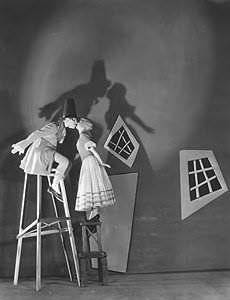
FAQ About The Role of Silence in Film Aesthetics

What is the role of silence in film aesthetics?
Silence in film aesthetics serves as a powerful tool to enhance storytelling and emotional impact. It creates space for the viewer's personal reflection and interpretation, allowing the narrative and visuals to speak louder than words. By punctuating moments with silence, filmmakers can emphasize critical points in the story, evoke tension, or highlight the emotional states of characters.

How does silence affect storytelling in films?
Silence affects storytelling in films by providing contrast to sound, thereby accentuating scenes and character emotions. It can build suspense, create dramatic tension, or offer relief after high-intensity sequences. Silence allows audiences to focus more intently on visual cues and the actors' non-verbal performances, leading to a deeper engagement with the narrative.

In what ways can silence influence viewer perception in a film?
Silence can influence viewer perception by directing attention to particular details, evoking emotional responses, and encouraging deeper contemplation. It alters the pacing and rhythm of a film, which can change how viewers experience time within the narrative. Additionally, silence can create an immersive atmosphere, drawing viewers into the film's world and allowing them to project their interpretations onto the story.

What cinematic techniques utilize silence effectively?
Cinematic techniques that effectively utilize silence include visual storytelling, such as using expressive cinematography and striking visuals that do not rely on dialogue. Other techniques include the strategic use of pauses, cutting off the soundtrack to focus attention, or employing silence in juxtaposition with sound to create contrast and highlight tension.

Can silence in film create suspense?
Yes, silence can create suspense in films by generating anticipation and keeping viewers on edge. The absence of sound can leave audiences wondering about what will happen next, as it often signals an upcoming critical or dramatic moment. Silence gives space for anxiety to build, allowing the viewer’s imagination to fill in the gaps with tension and uncertainty.

What are some examples of films that use silence effectively?
Some notable films that use silence effectively include 2001: A Space Odyssey, where silence in space contrasts with the majesty of the visuals, and A Quiet Place, where silence is crucial to the plot and heightens suspense. Another example is No Country for Old Men, which uses silence to build tension and focus on the psychological elements of the story.

Is silence more impactful in certain film genres?
Silence can be particularly impactful in genres such as horror, thriller, and drama. In horror and thriller films, silence often precedes a sudden event or revelation, creating heightened suspense and surprise. In dramas, silence can emphasize the emotional states of characters and underline poignant moments of introspection and reflection.

How does silence contribute to character development in films?
Silence contributes to character development by allowing viewers to observe characters in moments of introspection or conflict without verbal distraction. It gives actors the space to express emotions and thoughts through body language and facial expressions, providing insight into their internal struggles and personalities. This can deepen the audience's understanding and connection to the characters.

What are common misconceptions about the use of silence in films?
A common misconception is that silence is simply the absence of sound or indicates a lack of content. In reality, silence is an intentional choice that can be as meaningful and expressive as dialogue or music. Some also believe that silence makes films boring, whereas it can actually enhance engagement by compelling viewers to focus more intensely on visual and emotional cues.

How do filmmakers decide when to use silence in a film?
Filmmakers decide to use silence in a film based on narrative needs and emotional impact. They consider factors such as storytelling rhythm, the emotional state of characters, or significant plot developments. Directors and sound designers collaborate to determine where silence will best serve the film’s aesthetic and thematic goals, ensuring it enhances rather than detracts from the viewer’s experience.

Does the use of silence in film vary with cultural context?
Yes, the use of silence in film can vary with cultural context, as different cultures may interpret and value silence differently. For example, Western films might use silence for tension, while some Eastern films might employ it for contemplation and spiritual depth. Understanding the cultural background of the intended audience can influence how silence is employed in the storytelling process.

How does silence interact with other sound elements in film?
Silence interacts with other sound elements by creating contrast that can heighten the impact of both silence and sound. For example, a period of silence can amplify the subsequent effect of a loud noise or music cue. It also opens space for diegetic sounds—the natural sounds occurring within a film's environment—to emerge and shape the realism or mood of a scene.

Are there any theories that explore the importance of silence in film?
Theories exploring the importance of silence in film often revolve around its psychological and emotional effects on audiences. Film theorists like Michel Chion have examined silence as an element of sound design, proposing concepts like 'acousmatic sound' to discuss how unseen sounds—or silence—affect viewer perception and narrative significance.

Can silence in films enhance realism?
Silence can enhance realism by mimicking real-life situations where conversation is minimal, such as during intense focus, emotional processing, or solitude. It can create an authentic atmosphere by allowing natural ambient sounds to flow without interruption, thereby grounding viewers in the reality of the setting and the characters' experiences.

Why might some films choose not to use silence at all?
Some films might choose not to use silence if they aim for a fast-paced, energetic style where constant audio is crucial for maintaining momentum. Comedies, for instance, often rely on dialogue for humor and timing, whereas action films might use continuous sound to keep adrenaline levels high. The choice largely depends on the intended mood and viewer engagement strategy.

What role does silence play in enhancing the emotional impact of a film?
Silence enhances the emotional impact of a film by stripping away external distractions and allowing viewers to engage intimately with the visual and emotional content. It deepens the audience's connection with characters during pivotal moments and can heighten feelings of suspense, sadness, or introspection by creating a space for emotional resonance and reflection.

How does silence affect the pacing of a film?
Silence affects the pacing of a film by providing natural pauses that can slow down the tempo and allow for emotional or narrative reflection. These pauses can be used to transition between scenes or accentuate turning points in the story, offering audiences time to process and absorb information. This pacing adjustment can heighten the impact of subsequent scenes or developments.

How can silence be used to reflect themes in a film?
Silence can reflect themes in a film by underscoring moments of introspection, conflict, or transformation. It can emphasize themes like isolation, inner turmoil, or existential reflection by providing moments of pause where the absence of dialogue or music aligns with the thematic content. Silence can thus serve as an auditory metaphor, enhancing the film’s narrative depth.

What are some challenges filmmakers face when using silence in films?
Filmmakers face challenges such as maintaining viewer engagement during silent moments, as the lack of audio can potentially lead to reduced attention if not supported by compelling visuals or storytelling. They must also carefully balance silence with sound to ensure the narrative flow is coherent and impactful without unnecessary disruption or confusion.

Can silence be considered a character in a film?
Silence can be considered a character in some films, acting as an omnipresent force that influences the narrative and characters. It serves not only as a background element but actively shapes the audience’s emotional journey and the film's atmosphere. In some contexts, silence juxtaposes the chaos of the plot, framing it as a silent observer or even antagonist within the story.
